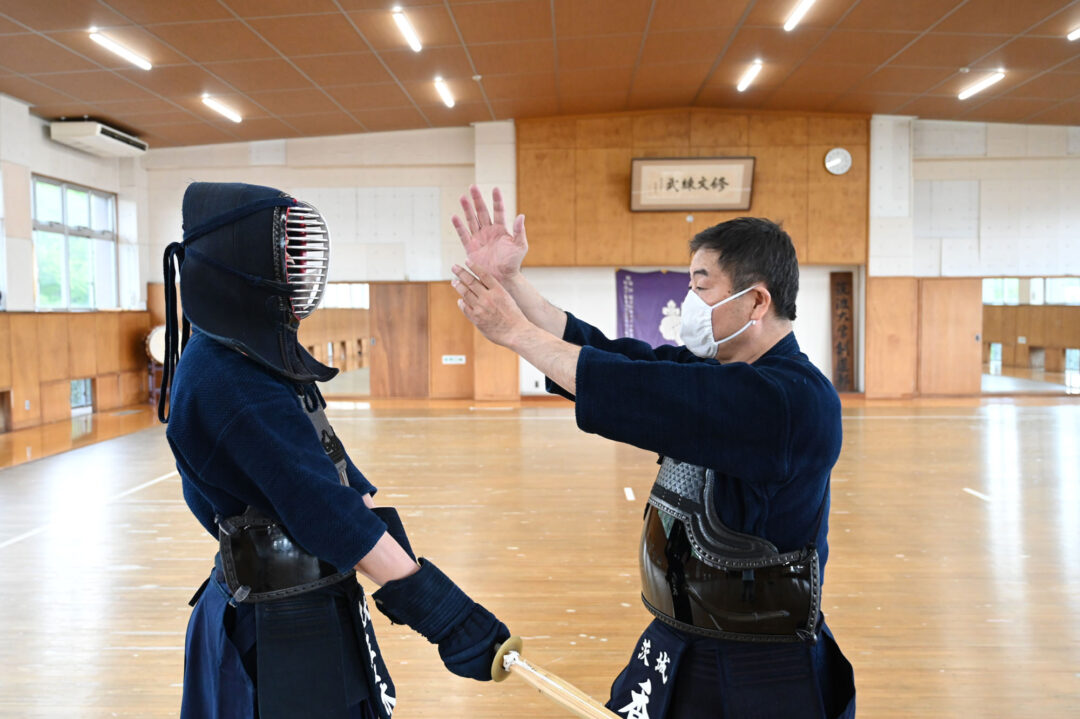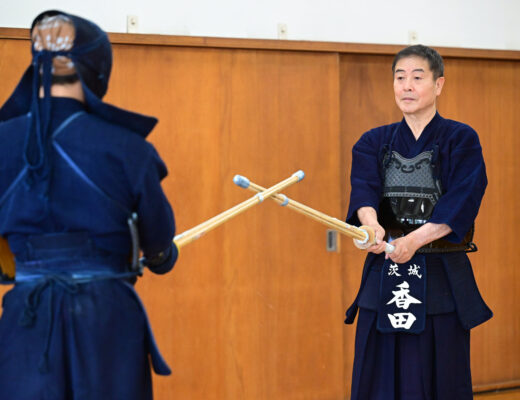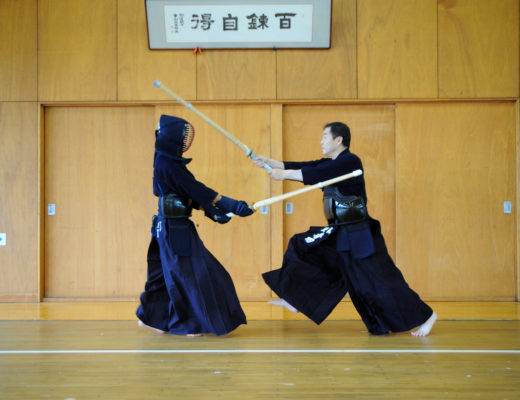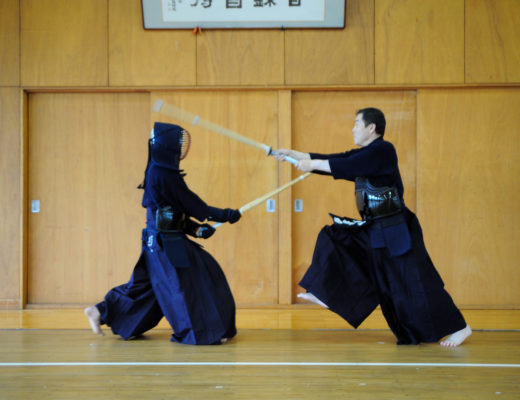KENDOJIDAI 2021.9
Photo: Nishiguchi Kunihiko
Composition: Yanagida Naoko
Translation: Jouke van der Woude
Sharpness and momentum are essential elements for a successful strike. Hanshi Koda Kunihide, a professor at the University of Tsukuba, says, “If you understand the requirements for a valid strike and its elements, you can naturally study the elements of sharpness and momentum”.
What does it mean to be strong? If you can understand that, you will become stronger.
Koda Kunihide, Hanshi 8th Dan
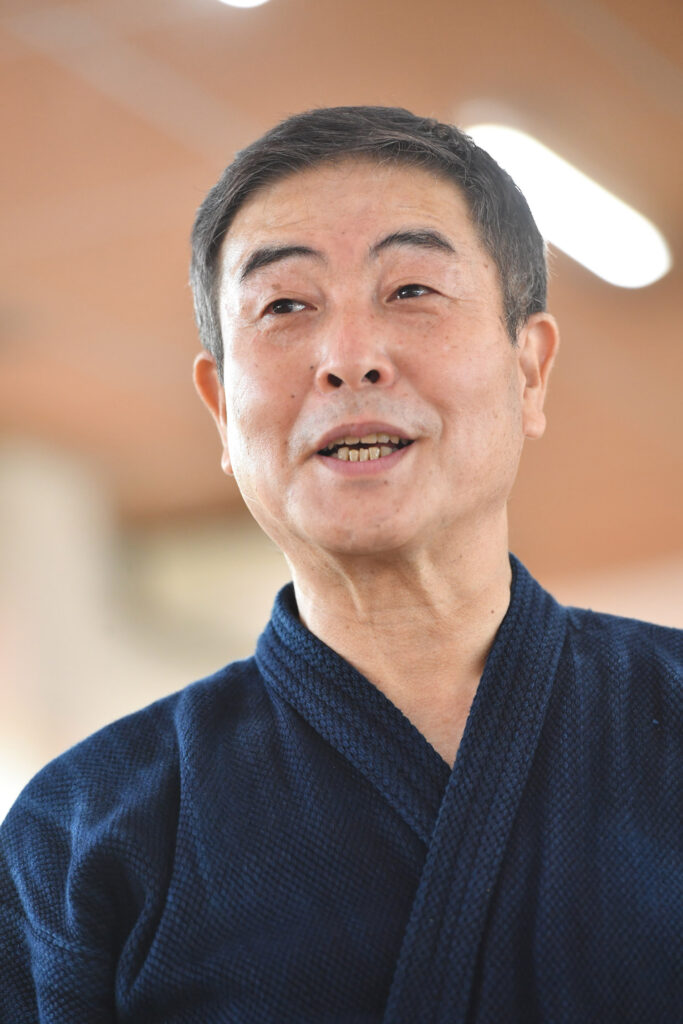
I am sure that many of you have experienced the advice of “lack of sharpness” or “lack of momentum” in training.
I believe that sharpness and momentum are two of the most important factors required to determine Ippon. When I see people who pass the examinations for higher dan ranks, I see that their strikes have these elements. For example, the examination hall is usually a large facility, and the strikes of those who pass the 8th Dan examination can be heard with a loud sound even from a distance. The same is true in Shiai.
Such an eye-catching and impressive strike has sharpness and momentum.
So, how can we achieve this?
To begin with, what is sharpness and what is momentum? When we observe the strikes of those who are said to have these elements we find that the way they seize the opportunity to strike, their full Kamae, proper posture, sharpness of Tenouchi, and their footwork are all sensible. On the other hand, even if some elements are good, but the posture is bad, it will not look sharp. Sharpness and momentum are influenced by all the overall requirements and factors in Kendo.
In other words, the The Regulations of Kendo Shiai and Shinpan contain hints on how to create sharpness and momentum, and I would like you to refer to them. The degree of perfection required differs depending on the level of skill, but if you are aiming for a higher Dan-grade, it is important to practice with the contents of the rules in mind. If you have not read this book, I recommend you do so.
It is often said that “Atekko (hitting rather than striking) Kendo” is a form of Kendo in which one tends to lean forward when the desire to “hit” is strong. In this case, the upper body tends to be overstrained, and it is difficult to strike with the correct blade angle and proper posture. Of course, it is also difficult to learn to strike with sharpness.
In addition, if the Tenouchi is too tight, and the strike performed with a punching motion is painful. However, if you can use Tenouchi flexibly, even if it is powerful, it does not hurt, and is a rather pleasant sensation. This is a sharp strike, and it is different from a strong and painful one.
If you understand the requirements of a valid strike and its elements, and study them in Keiko, you will naturally come closer to sharpness and momentum. This also means that you will be able to approach the ideal Kendo that you are currently considering.
The difference between big and small strikes
The rest of this article is only available for Kendo Jidai International subscribers!

